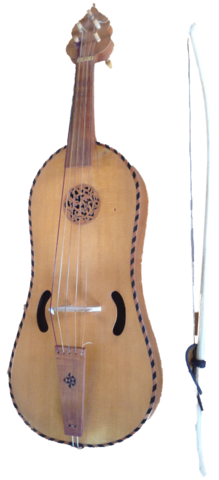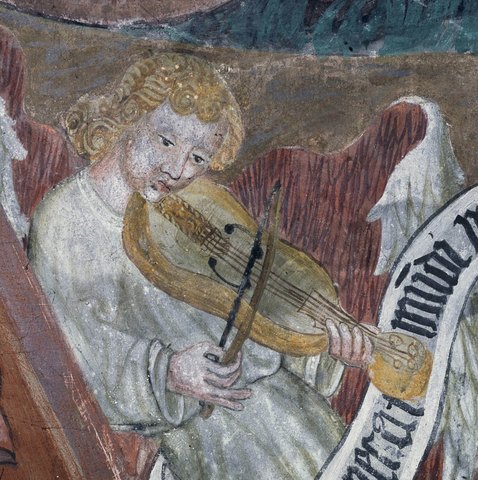Vielle

The vielle, or fiddle, was the most popular and widespread of instruments for vocal accompaniment throughout the late Middle Ages. It comes in a wide variety of shapes and sizes. It usually has between 3 and 5 strings, of which one or two are occasionally arranged beside the neck and used as drone strings. Until the 13th century, there is also a da gamba (at the leg) playing posture, which derives from the Arabic origins of the instrument. From the 13th century onwards, the da braccio (on the arm) posture became established and was to dominate until the advent of the early viols (» viola da’arco) at the end of the 15th century.
With a curved bridge, the vielle/fiddle might be suitable for performing polyphonic repertoires. However, the illustrations tend to show a straight or very flat bridge, which indicates playing with the participation of several strings at the same time and, with the appropriate tuning, is particularly suitable for the interpretation of monophonic music and for the accompaniment of (monophonic) singing. Jerome de Moravia describes three different common tunings for vielles in Paris at the end of the 13th century. Surviving fragments and sources suggest a monoxylic construction of the instrument, in which the body was hollowed out of one piece of wood.

